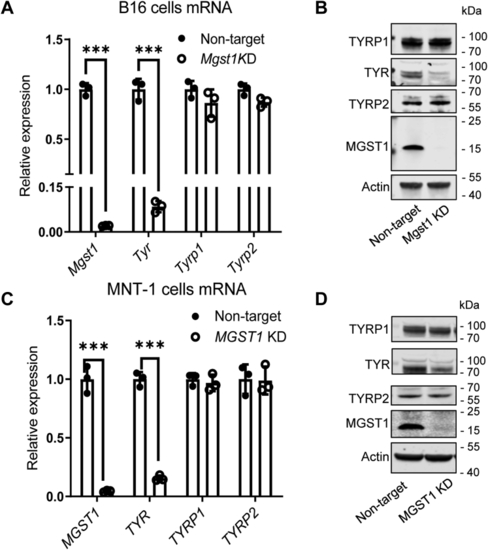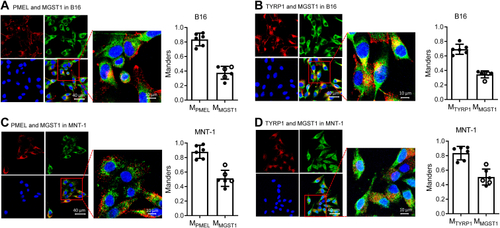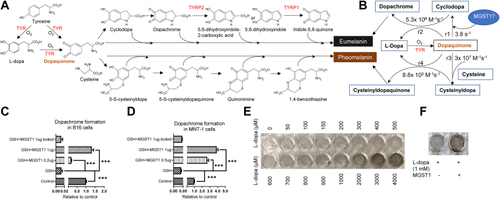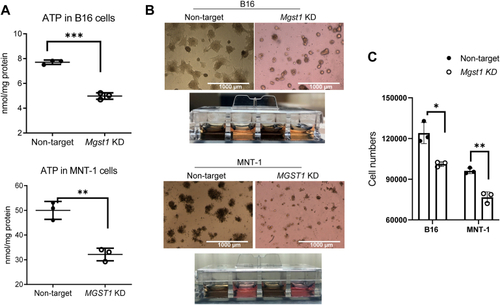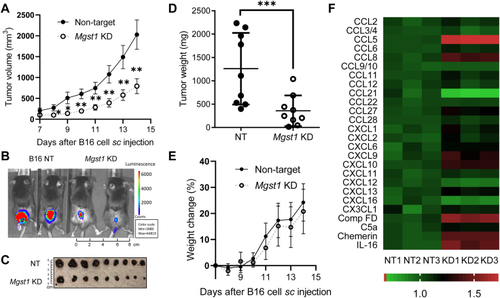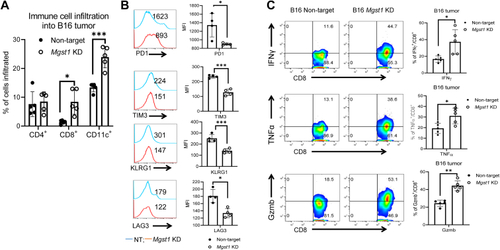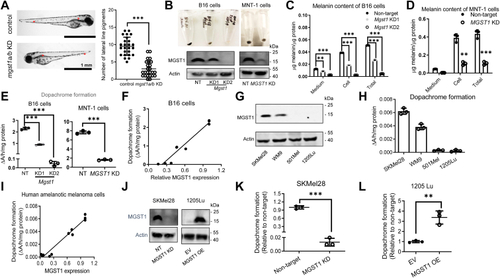
MGST1 positively regulates melanogenesis.A, knockdown (KD) of mgst1a/b in zebrafish was achieved using antisense morpholinos. mgst1a/b KD zebrafish have decreased numbers of melanocytes localized in the midline of the embryos (between the two stars) compared to control morpholino zebrafish (n = 25/group). B, KD of MGST1 in mouse B16 and human MNT-1 melanoma cells was achieved using lentiviral shRNA. MGST1 silencing was confirmed by Western blot. MGST1 KD B16 and MNT-1 cell pellets show decreased pigmentation compared to nontarget (NT) shRNA control B16 and MNT-1 cell pellets. C and D, total melanin content (both intracellular and secreted) was measured by spectrophotometric assays in B16-NT, B16-KD1, B16-KD2, MNT-1 NT, and MNT-1 KD cells. E, dopachrome formation from L-dopa was measured in whole cell lysates from B16 NT, B16 Mgst1 KD1, B16 Mgst1 KD2, MNT-1 NT, and MNT-1 MGST1 KD cells. F, linear correlation between dopachrome formation and amounts of MGST1 in B16 cells. G, MGST1 protein expression in amelanotic SK-Mel-28, WM9, 501Mel, and 1205Lu human melanoma cells. H, dopachrome formation from L-dopa was measured in whole cell lysates from SK-Mel-28, WM9, 501Mel, and 1205Lu cells. I, linear correlation of dopachrome formation with amounts of MGST1 in SK-Mel-28, WM9, 501Mel, and 1205Lu cells. J, KD or overexpression (OE) of MGST1 in SK-Mel-28 cells or 1205Lu cells was achieved using lentiviral systems. MGST1 silencing or overexpression was confirmed by Western blot. K and L, dopachrome formation from L-dopa was measured in whole cell lysates from SK-Mel-28-NT, SK-Mel-28-KD (K), 1205Lu-EV, and 1205-OE (L) cells. ∗∗ and ∗∗∗ indicate p < 0.005, and p < 0.0005, respectively. MGST, microsomal glutathione transferase.
|


